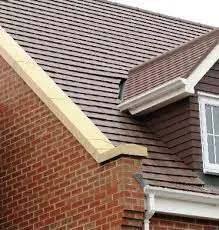GRP for Challenging Environments in Housebuilding
How this Material is Ideal for Areas Where Traditional Materials May Not Perform as Well
When it comes to housebuilding, choosing suitable materials is crucial for ensuring durability, longevity, and structural integrity. While traditional materials like wood, brick, and concrete have been the go-to options for centuries, there are certain challenging environments where they may not perform as well. That’s where Glass Reinforced Plastic (GRP) comes into the picture.
GRP, also known as fibreglass, is a composite material made from a polymer matrix reinforced with glass fibres. This combination creates a lightweight yet solid material that can withstand harsh conditions and challenging environments.
Corrosion Resistance
In environments with high moisture or chemical exposure, traditional materials such as steel or wood can suffer from corrosion, leading to structural damage. GRP, on the other hand, is inherently corrosion-resistant. It does not rust, rot, or degrade when exposed to moisture or chemicals, making it perfect for components on buildings located in coastal regions or industrial areas.
Strength and Durability
GRP is renowned for its exceptional strength-to-weight ratio. It is pound-for-pound stronger than steel, making it an excellent choice for areas prone to high winds or extreme temperatures. The toughness of GRP ensures that it can withstand heavy loads and impacts, reducing the risk of structural failure.
Thermal and Electrical Insulation
Traditional materials used for building components may struggle to provide adequate thermal insulation. However, GRP offers excellent thermal insulation properties, helping maintain a comfortable indoor environment while reducing energy consumption. Stormking have a wide range of building components that promote thermal insulation such as the market leading WARMADORMA. A complete thermally effective solution, these dormer units cut costs on energy bills without compromising on the quality.
Design Flexibility
One of the significant advantages of GRP is its versatility in design and customisation. It can be moulded into various shapes, sizes, and textures, allowing architects and builders to create unique and aesthetically pleasing structures. This design flexibility also extends to features like windows, doors, and other architectural elements, making GRP suitable for both functional and decorative applications. Stormking possesses a large product portfolio with the ability to customise to suit. From bay window roofs to entrance door canopies, we have various styles and finishes to fit the look and feel of the overall building perfectly.
Low Maintenance
Traditional materials often require regular maintenance, such as repainting, sealing, or treating to prevent deterioration. GRP, on the other hand, requires minimal upkeep. Its resistance to corrosion, moisture, and UV rays means it can maintain its structural integrity and appearance over an extended period with little to no maintenance, reducing long-term costs.
GRP offers significant advantages in challenging environments where traditional materials may struggle to perform. Its corrosion resistance, strength, durability, thermal insulation, and design flexibility make it an ideal choice for coastal areas, regions with extreme temperatures, industrial settings, and other demanding environments. With GRP, builders can construct houses and structures that can withstand the test of time, ensuring safety, efficiency, and longevity for homeowners.
As a leading supplier of GRP building components to the house building and construction industry in the UK, Stormking offers a wide range of GRP products designed to replace the traditional materials. Find out more about the GRP building components we offer or contact us.

